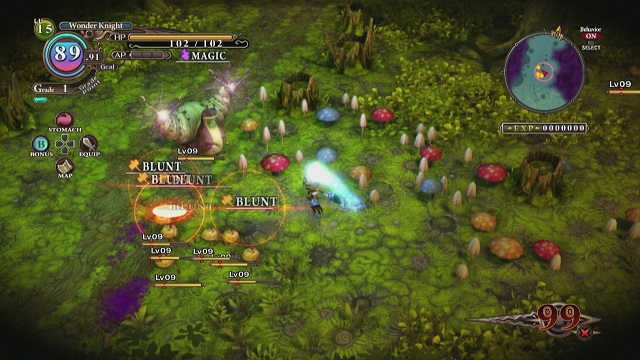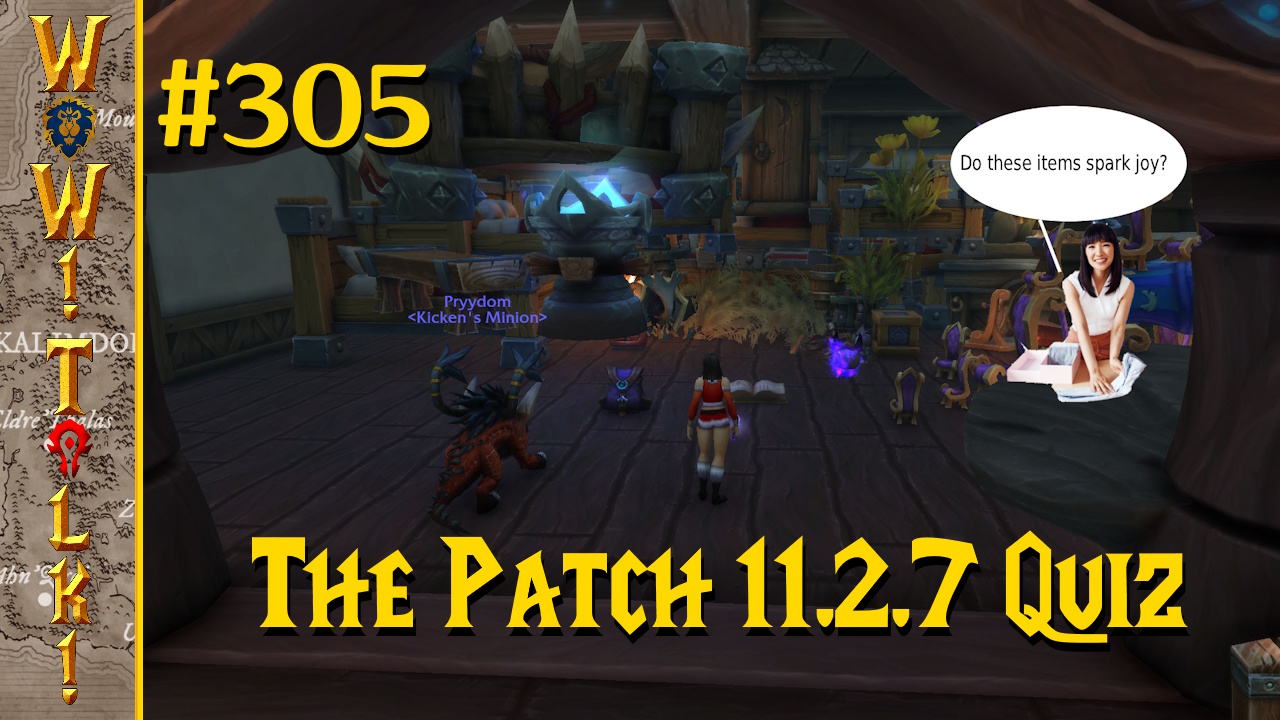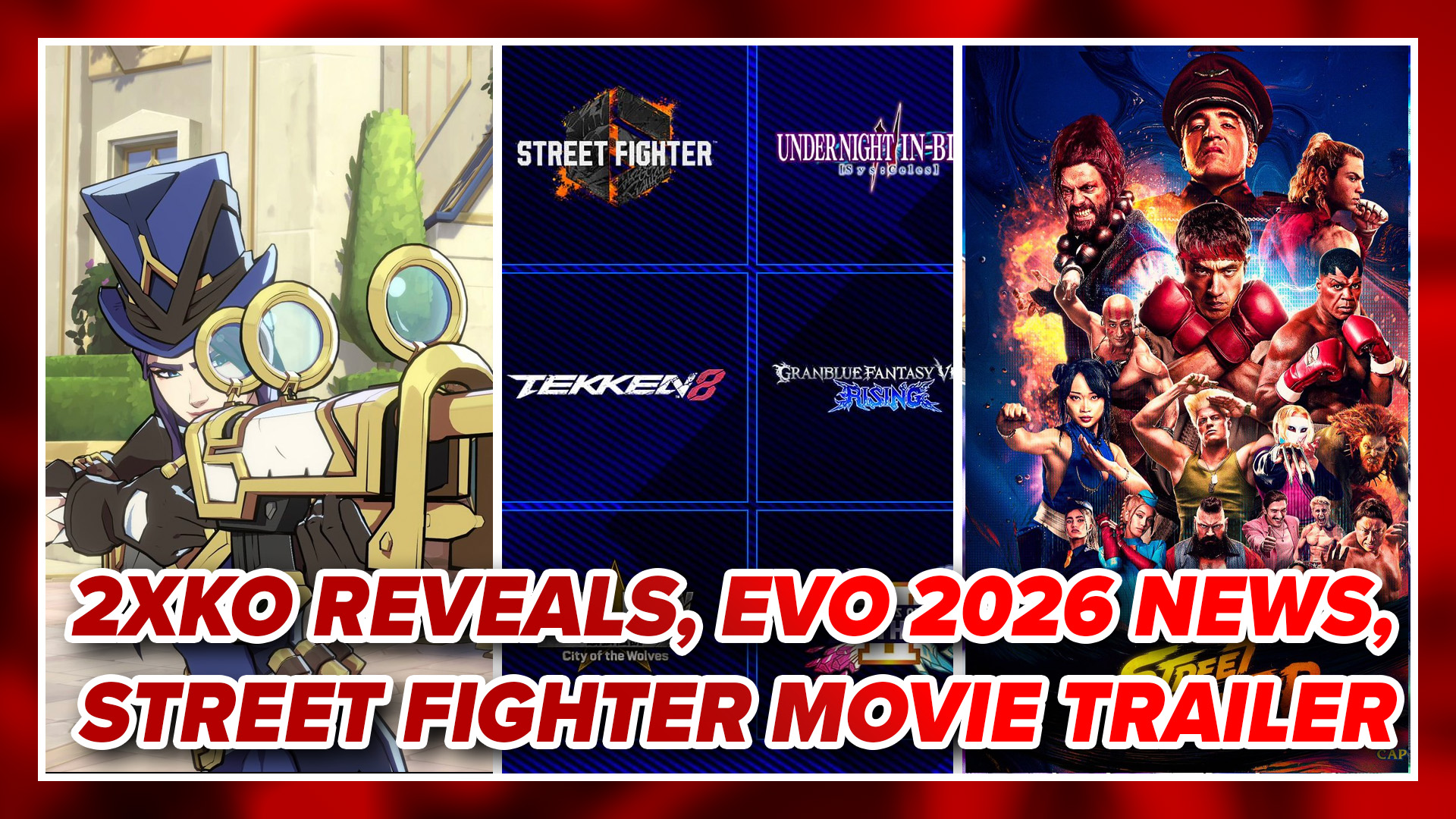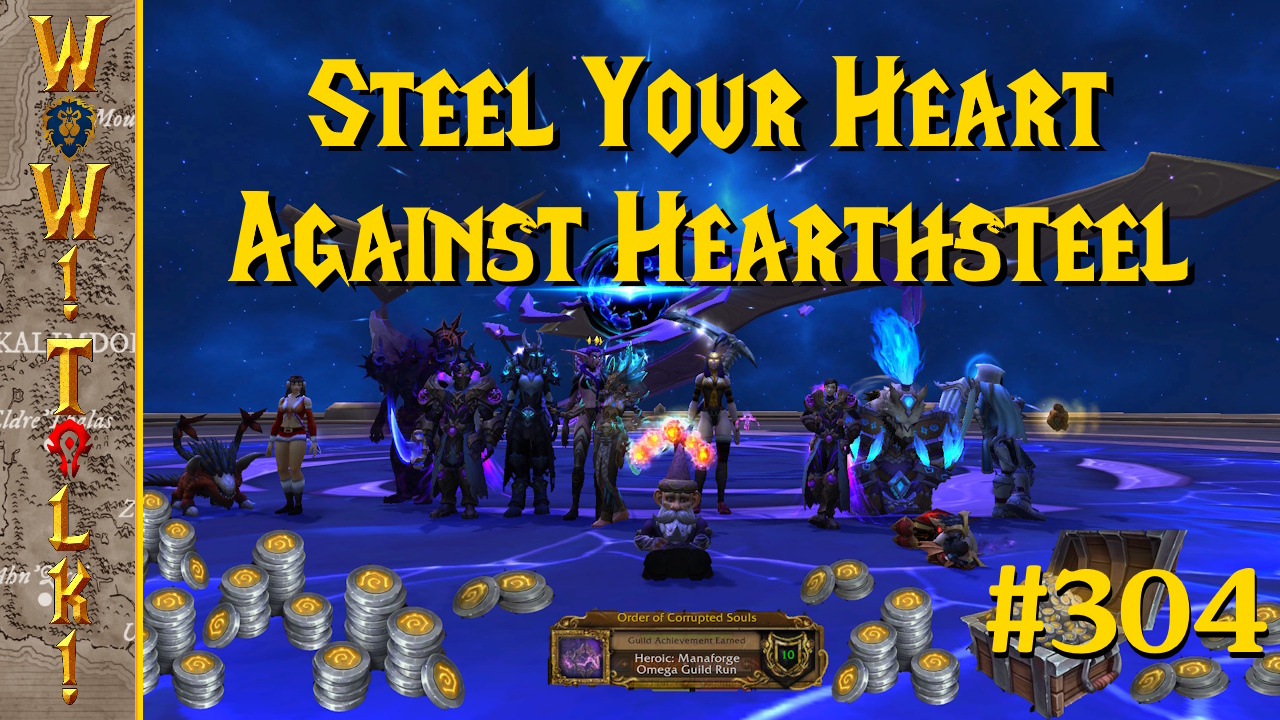I was surprised to hear that Nippon Ichi Software (NIS) wanted to work on an action game. The company has a pretty solid history with strategy RPGs, and I’ve always liked the odd art style and bizarre sense of humor I’ve seen from their games. I’ve never actually had a chance to sit down and enjoy a game of Disgaea, though, but I did spend some time playing the Prinny series. They seemed to have a good handle on madcap 2D action there, so I felt that (while it was strange to see them making a 3D action game) they could do it. The resulting game, The Witch and the Hundred Knight, ended up being an all right game, but unfortunately wasn’t good enough to hold my attention for long. Its mechanics work and there is little that’s actively wrong about the game, but I still had to force myself through many of its final hours.
You might have to spend an unusual amount of time figuring out the many systems involved in this top-down action game. That might seem like an odd thing to say of a game that starts right off with a tutorial, but the game doesn’t actually teach you any of the things you’d want to know about it at the start. The game spends the first half hour going through the basics of running, attacking, and camera movement, but when you start gaining new abilities, want to know about immunities, or need to figure out what on earth GigaCals are, the game only shows you a single block of text while the game loads. Why it feels the need to show you how to walk and can’t be bothered to explain unique, intricate game mechanics is beyond me. The funniest part of it all is that those blocks of text between load screens explained everything in simple, straightforward language that told me everything I needed to know in seconds. Fire whoever created the tutorial segment and give a raise to the guy who did the loading screens.
There is a decent amount of stuff to learn for what I thought would be a basic action game. It’s a top-down-ish view, where you can turn the camera or alter the viewing plane a bit, sort of like a controllable The Legend of Zelda: A Link Between Worlds. The camera might not seem like something worth pointing out, but there are a lot of trees and other details thrown into many of the environments that make it hard to see where enemies are. There are little indicators to show enemy positions, but they’re small compared to the enemies, so if you’re swinging your weapon around without locking on, it can be hard to hit things. I often preferred to attack without locking on when I used radius attack weapons, so I found all of the trees to be a nuisance due to the camera’s position. Yes, I can lock on, but if you’re going to do a top-down view, don’t put crap in the way.

You have several different ways of making your enemies miserable. You can equip up to five weapons at once, but I couldn’t figure out how to switch between them at first. I noticed (when I was attacking outside of tree cover) that each stage of your basic combo is dictated by the weapon in that slot. You could have a hammer, spear, sword, wand, and another spear equipped, and spamming the attack button would cycle through them in that order. So, if you like to open with a radius attack, put a hammer in your first slot. If you want to open with something precise, start out with a spear. If you’re fighting a mixed group of enemies with different weaknesses and immunities, then just keep hammering the button and you’ll eventually hit the enemies with the proper attacks.
The five weapons seem like a neat idea that adds variety, but they only really make it so I had to enter the menus less. I just kept a weapon of every type equipped at all times so I could just hammer my way through enemy groups without even bothering to switch to the right weapons. You quickly learn which enemies are weak/immune to what, so it doesn’t take long to learn what to do. Now, I could easily hop into a menu and equip the right weapon so I’m doing the proper attack on the first swing, but that means a few seconds puttering around the menus. This system cuts that out by letting me lazily hammer away, eventually landing the right attack. It’s a nice gesture for people who don’t feel like messing around with menus and weapon weaknesses, and adds a bit more visual flare to combat by adding different weapons during your swings, but it really isn’t all that interesting.
Enemy weaknesses suffer from the same problem. At a glance, they seem like they’d add a lot of variety by forcing players to switch out the proper weapons, but all I did was slam into them with a combo and wait for the right hits to strike home. It’s smarter to play with the right weapons equipped, constantly shifting them so that you maximize your damage, but it’s just easier to swing away. Having five weapons equipped means it’ll work just fine, too.

There is another odd system in place that makes battle interesting, though, which is the GigaCals. I had no idea what they indicated at first, although the witch (Metalia) who summoned your character mentioned that your character will drop dead if he doesn’t achieve his task in time, which put me on the right track to figuring it out. Basically, the GigaCals are a counter that start clicking down the moment you set foot in a level, and when they run out, your hit points drop like a stone until you’re dead. They deplete somewhat slowly as you go through a level, but they still drop fast enough that you may want to hurry about your tasks in any given stage. Considering the game involved some large maps to explore and hidden treasures to find, this put a little urgency into me that I wasn’t used to from the dungeon crawlers I’ve played. I’m used to worrying about monsters, but not a time limit.
You can do a couple of things to give yourself a bit more time. The meter counts down much more slowly when you’re in combat with monsters, so, like Hotsuma from Shinobi, you’re going to want to be killing things all the time to keep yourself alive. You might not want to kill them, though, as you can lower an enemy’s health down to a point where you can devour them, gaining a few GigaCals back in the process (it’s short for Giga Calories, after all). If that isn’t enough, there are pillars that you activate as you play through each level that you can use to restore your GigaCals. You have to sacrifice some of the temporary level ups you gain throughout the level (more on them later) to get ten percent of your GigaCals restored, which is a worthwhile, but difficult trade to make. Do you risk running out of GigaCals and dying by spending your power-ups on better boosts? Or do you play it safe and stay alive, costing yourself your hard-earned power-ups?
You gain temporary power-ups as you play through each of the game’s stages, earned by killing enemies, and they are counted separately from your experience level. You see, the experience and weapons you pick up throughout each level all go into a pool that you can’t access until you beat the area. You get killed, you lose it all. So, while you’re in the level, the game grants you temporary power points based on the enemies you kill, and these can be spent at pillars throughout the level to give you enough boosts to get through. Since you may have to spend them just to stay alive by restoring your GigaCals, it creates a difficult, but odd, kind of balance in the game that works.

Then again, you could eat enemies and avoid all your problems, right? Well, eating an enemy will put a stone in your stomach, and your stomach is your inventory. You have a limited amount of slots, and each devoured enemy fills a slot that you could be putting loot into. There are items that will let you puke up garbage items, but otherwise, you might not want to be eating baddies all the time. Combining the two systems forces players to make decisions on whether it’s better to waste buffs or loot, depending on how hard a time they’re having in a given stage. It’s an interesting balance to strike up, but gave me lots of options on how I wanted to survive my time limit if the level was hard but short or long and easy. It’s kind of weird to be balancing the two at first, but they clicked well together once I got the hang of it.
That being said, I found it a bit hard not to kill everything before I could eat it. The game is a bit sluggish to respond, with the character taking a moment to respond to my commands to start or stop moving/attacking. As such, I found it easier to aim myself at enemies and just swing wild, hoping to completely overpower them. Everything else felt a little too delayed, so I just went with the brute force method, but that meant I had a hard time eating enemies since I tended to just plow through their health. It gets a little better later on in the game once things get stronger, but for large portions of the beginning I couldn’t eat an enemy to (literally) save my life.
The combat issues become more problematic once you run into bosses. Now, there’s some stuff that could have been interesting about bosses, such as the guard meter. This meter runs underneath the boss’ life meter, and fluctuates depending on how vulnerable the boss is to attack. If the boss is just roaming around, the meter stays high and your attacks do lousy damage. If the boss is about to use an attack, the guard meter drops and you can get in a few hits.

Now, I could have just been told that bosses were weak just before they attacked and that would have been sufficient, but the meter does act as a nice visual aid. Even so, I found that it encouraged me to look away from the boss while fighting it, which is a terrible idea. Having to look away from some of the smaller bosses would often mean looking up to find my character taking a hit, or lse track of the boss for a few seconds and waste time having to find it. It might only take a split second to look at the bottom of the screen and then back up, but it was often enough to put me at high risk of getting hit. I was better off just watching the stupid boss itself, only attacking when it looked like it was up to something.
What was easier, and actually already part of the game’s system, was to look for the attack type that would appear over the enemy’s head. The game indicates what type of attack you or any enemy in the game is going to throw, like slashing or bludgeoning, over your head as you’re doing it. I didn’t pay it much attention during regular fights, but when you’re fighting bosses it’s really useful. I found many bosses used a variety of attacks, so reading these prompts was a whole lot easier than using the guard meter. Not only would I have a good idea on what was coming once I learned the boss’ attacks, but I’d also know when they were coming so that I could jump in and deal some damage. It rendered the guard meter a bit useless.
I said that combat was a problem with bosses, though. Since your character seems to have slippery movement and a bit of delay in attacks, it meant I was usually flinging myself into bosses a bit too late to take advantage of a low guard meter. I’d either be too early and take a hit or too late and miss the boss entirely since the controls felt so strange, and it made the fights against them slow and tedious. Every once in a while the planets would align and I’d stumble into a boss when it was vulnerable, but mostly my timing was always off since attacking and moving felt so weird.

The story and visuals might have been able to save it, though. Like I said, I enjoy the quirky nature of NIS’ games, and I hoped that would be on display here. The graphics on the characters and their nearly-still pictures are nice, showing a lot of life and movement. I really liked them, but that’s about the only part of the game that looked all that nice. Everything else had a very plain, dull look to it. Enemies had very little detail to them, almost looking like stock enemies from an NES game that had been rendered in 3D. I’m talking jack-o-lanterns and leaves, here. Even when things do improve, the game just looked really washed out and blurry any time I wasn’t looking at the hand-drawn character sprites. Everything looked like it was murky, and it just wasn’t pleasant to look at. The graphics would have been competent at best had they been sharp, but as is, they’re just bad.
The story might have been able to pull it all back together, but I found I had a hard time getting into it. The playful nature of the main character’s (Hundred Knight) design just seemed to be at odds with the story, which would bounce between being goofy and sadistic at times. I’m not extremely familiar with NIS’ library so this could be a typical thing for them, but I just found some of the odd things they said didn’t jive with the game’s attempt at being playful. Having my knight make cutesy noises while Metalia called a boss a filthy whore who should choke on her own blood just felt jarring and weird. It all feels a bit demented at times, and while it might work for some people, it felt like the story couldn’t settle on a tone to me. Also, turning that female enemy into a mouse and summoning three “horny” mice to “make lots of babies” with her? Kind of a bit too weird for my tastes.
The Witch and the Hundred Knight plays decently, but there’s nothing about it that really impressed me. I like that the systems add a little bit of intricacy to what may have been plain combat, but the slippery movement and slow reaction times pushed it more into mindless hack and slash territory. That’s fine, and the game will appeal to some, but the weak storyline and graphics failed to add enough enjoyment to make me want to keep killing basic enemies. It’s not a bad first outing into hack and slash territory for NIS, but there’s very little here to make me want to keep coming back to it. Still, I can’t deny that they tried hard to put in some interesting elements but just botched the delivery. I may have found that this game fell a little flat, but I think they can take what they learned from this game and create a quality action game some time down the road.





